The Chatham Albatross (Thalassarche eremita) is a captivating seabird species endemic to the remote Chatham Islands in the south-western Pacific Ocean.
Renowned for its striking appearance, impressive wingspan, and unique behavioral traits, this albatross occupies a crucial ecological niche in the marine ecosystem of the Southern Ocean.
With its graceful flight, elaborate courtship displays, and dedicated parental care, the Chatham Albatross embodies the resilience and adaptability of seabirds to the challenges of oceanic life.
Understanding its biology, behavior, and conservation needs is essential for ensuring the long-term survival of this vulnerable species. So, stay sharp.
Identifying Criteria of Chatham Albatross
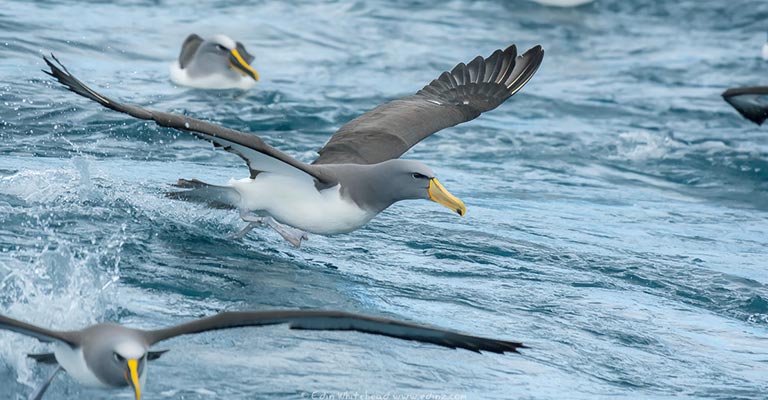
The Chatham Albatross (Thalassarche eremita) is a distinctive albatross species endemic to the Chatham Islands in the south-western Pacific Ocean.
Identifying this majestic bird requires attention to various physical features and behavioral traits. Here are some of the key points to aid in the identification of the Chatham Albatross:
Size and Shape
Chatham Albatrosses are large seabirds with a wingspan ranging from 2.2 to 2.5 meters (7.2 to 8.2 feet). Their wings are long and narrow, ideally adapted for gliding effortlessly over the ocean’s surface for extended periods.
Plumage
Adult Chatham Albatrosses have predominantly white plumage on their bodies, with black wingtips and markings along the trailing edges of their wings.
Juveniles, on the other hand, exhibit more mottled plumage, with a darker overall appearance compared to adults.
Head and Bill
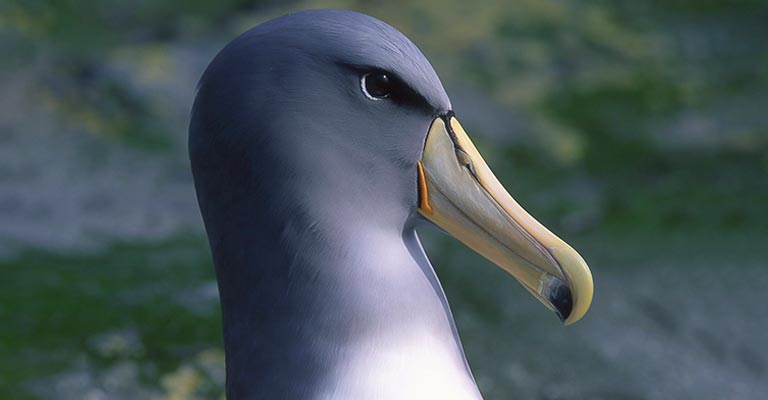
One distinguishing feature of the Chatham Albatross is its pale yellow bill, contrasting with the darker plumage around its eyes.
The bill is relatively long and hooked, typical of albatross species, enabling them to catch prey from the ocean surface efficiently.
Flight Pattern
Chatham Albatrosses display a graceful soaring motion when in flight, often gliding low over the water’s surface.
They have a distinctive buoyant flight style characterized by intermittent flapping interspersed with long periods of gliding.
Habitat
Chatham Albatrosses are primarily pelagic birds, spending most of their lives at sea, particularly in the southern oceans.
They are commonly observed near the Chatham Islands during the breeding season, nesting on rugged coastal cliffs.
Breeding Behavior
During the breeding season, Chatham Albatrosses gather in colonies on remote islands, where they engage in elaborate courtship displays, including bill-fencing and sky-pointing.
These behaviors help strengthen pair bonds and establish territories within the colony.
Vocalizations
While not particularly vocal, Chatham Albatrosses produce a range of guttural calls and squawks, especially during courtship rituals and interactions at the breeding colony.
Their vocalizations are distinct from those of other albatross species, aiding identification.
Conservation Status
As an endemic species, the Chatham Albatross faces threats primarily from habitat destruction, introduced predators, and fisheries bycatch.
Conservation efforts, including habitat protection and monitoring programs, are crucial for ensuring the survival of this vulnerable species.
Identifying the Chatham Albatross involves observing its size, plumage, bill coloration, flight pattern, habitat preferences, breeding behavior, vocalizations, and conservation status.
By paying attention to these critical characteristics, birdwatchers and researchers can confidently recognize and appreciate this remarkable seabird in its natural environment.
Taxonomy of Chatham Albatross
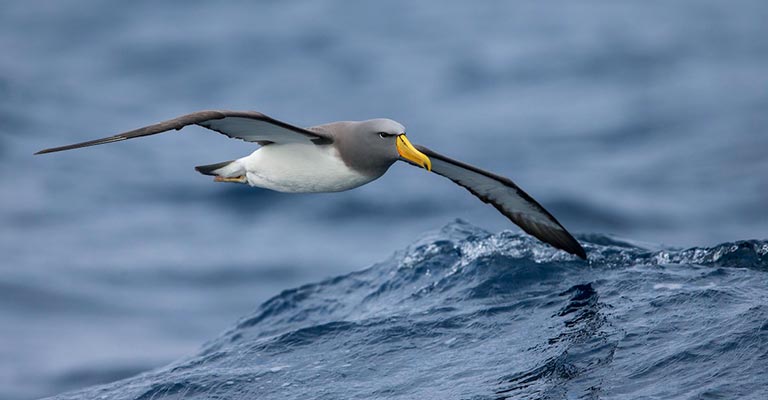
Here, the following table details the taxonomy of the Chatham Albatross:
| Taxonomic Rank | Classification |
| Domain | Eukaryota |
| Kingdom | Animalia |
| Phylum | Chordata |
| Class | Aves |
| Order | Phaethontiformes |
| Family | Diomedeidae |
| Genus | Thalassarche |
| Species | T. eremita |
The Chatham Albatross (Thalassarche eremita) belongs to the family Diomedeidae, which encompasses the albatrosses, a group of giant seabirds renowned for their impressive wingspans and long-distance oceanic foraging.
Within the family Diomedeidae, the Chatham Albatross is classified under the genus Thalassarche, which includes various albatross species. Its epithet, “eremita,” reflects its endemic status to the Chatham Islands.
Taxonomically, the Chatham Albatross is part of the order Procellariiformes, including other seabird families like petrels, shearwaters, and storm petrels.
This taxonomic classification underscores the evolutionary relationships and ecological similarities shared among seabird species, highlighting the Chatham Albatross’s place within the broader avian community of the Southern Ocean ecosystem.
Reproduction of Chatham Albatross
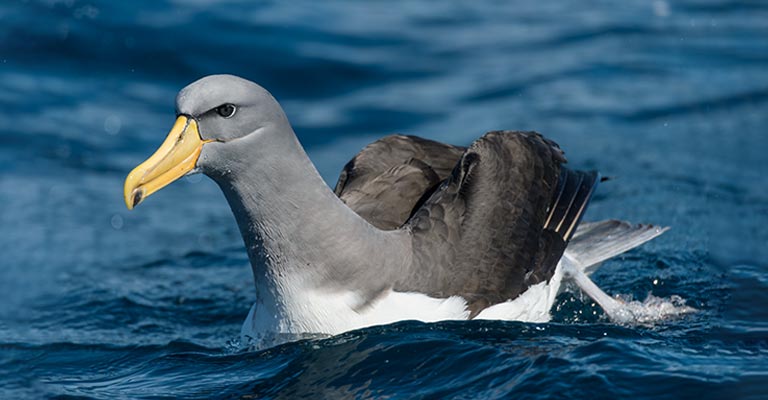
The Chatham Albatross follows a typical pattern of reproduction for albatross species. Breeding occurs in colonies on remote islands, particularly during the Austral summer.
Courtship displays involve elaborate rituals such as bill-fencing and sky-pointing to strengthen pair bonds.
Once a pair forms, they typically mate for life. The female lays a single egg, which both parents take turns incubating for around two months. After hatching, the chick is cared for by both parents, who take turns feeding and protecting it.
Chatham Albatross chicks have a long fledging period, often taking several months to develop flight feathers and gain independence. Parental care continues until the chick is capable of surviving on its own.
Breeding success can be influenced by factors such as food availability and environmental conditions, impacting the population dynamics of this vulnerable species.
Chatham Albatross Life History
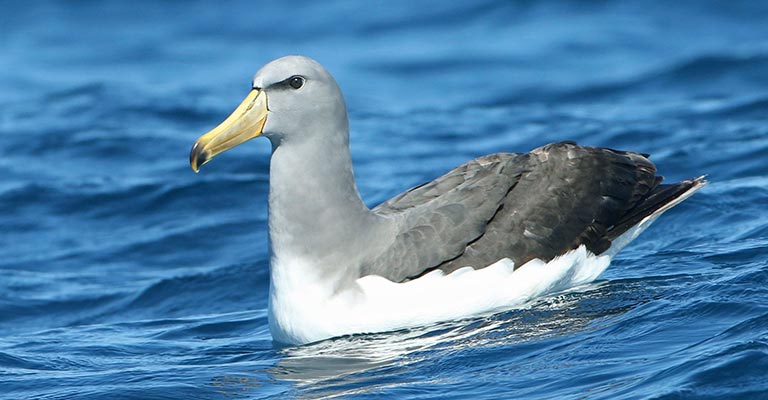
The Chatham Albatross (Thalassarche eremita) is a captivating seabird endemic to the Chatham Islands in the south-western Pacific Ocean.
Its life history encompasses various aspects, including feeding habits, habitat preferences, nesting behavior, susceptibility to diseases, conservation status, and efforts to ensure its survival.
Food
Chatham Albatrosses feed on fish, squid, and crustaceans obtained by surface-seizing, diving, or scavenging.
They are opportunistic feeders, often following fishing vessels for discarded bait or offal. Their diet reflects the abundance of prey species within their foraging range, which extends across the Southern Ocean.
Habitat
These albatrosses are pelagic birds, spending most of their lives at sea. During the breeding season, they frequent the open ocean, particularly the waters surrounding the Chatham Islands,
Outside the breeding season, they disperse widely across the southern hemisphere, utilizing a vast expanse of marine habitats.
Range Map
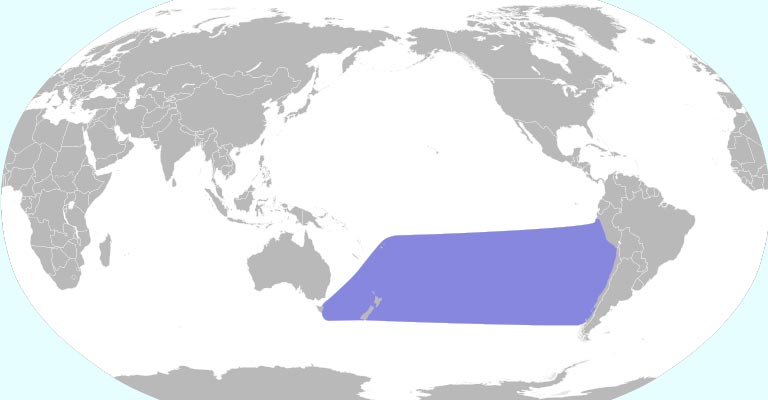
A range map illustrates the distribution of Chatham Albatross populations, highlighting breeding colonies on the Chatham Islands and their foraging grounds across the Southern Ocean.
It delineates the bird’s migratory routes and critical areas of concentration, aiding conservation efforts and research endeavors.
Diseases
Chatham Albatrosses may be susceptible to various diseases, including avian pox and botulism, affecting individual birds or entire colonies.
These diseases can harm reproductive success and overall population health if left untreated.
Treatment
Efforts to mitigate disease outbreaks among Chatham Albatross populations involve monitoring for signs of illness, implementing biosecurity measures, and providing veterinary care when necessary.
Treatment may include medication administration, quarantine protocols, and habitat management strategies to reduce disease transmission.
Conservation
The Chatham Albatross faces numerous conservation challenges, including habitat degradation, fisheries bycatch, introduced predators, and the impact of climate change.
Conservation initiatives focus on habitat protection, predator eradication, fisheries management, and international cooperation to mitigate threats and ensure the long-term survival of this vulnerable species.
The life history of the Chatham Albatross encompasses its feeding ecology, habitat preferences, nesting behavior, susceptibility to diseases, and conservation needs.
Understanding these aspects is crucial for developing effective conservation strategies and safeguarding the future of this magnificent seabird.
Nesting Habit of Chatham Albatross
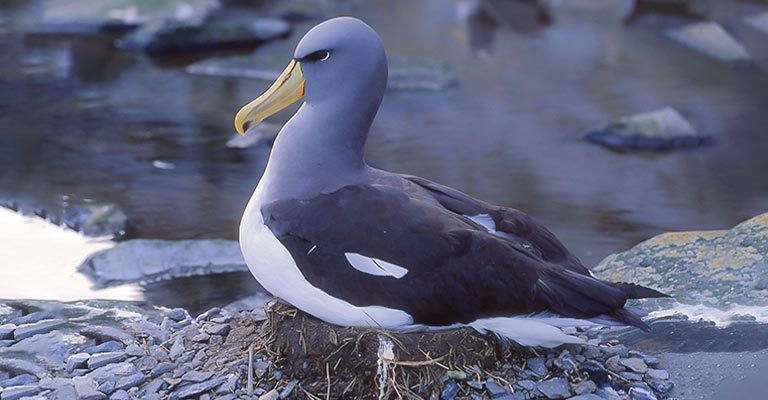
A table detailing the nesting habits of the Chatham Albatross is mentioned below. So, check it out with care:
| Nesting Details | Facts |
| Clutch Size | Typically one egg per breeding attempt |
| Number of Broods | Usually one brood per breeding season |
| Egg Length | Approximately 10 to 12 centimeters (cm) |
| Egg Width | Approximately 6 to 8 centimeters (cm) |
| Incubation Period | Around 65 to 75 days |
| Nestling Period | Roughly 6 to 7 months |
| Egg Description | Glossy, creamy-white with faint spotting |
| Nest Construction | Simple scrape or mound of soil and grass |
| Nest Location | Located on coastal cliffs or rocky outcrops |
| Parental Care | Both parents share incubation and feeding duties |
These nesting details provide insight into the reproductive behavior and parental care strategies of the Chatham Albatross, highlighting its adaptation to the rugged coastal environments of the Chatham Islands.
Chatham Albatrosses nest on remote coastal cliffs, forming colonies where they lay a single glossy, creamy-white egg per breeding attempt. Both parents are responsible for incubating the egg, which lasts approximately 65 to 75 days.
After hatching, the nestling period extends 6 to 7 months, during which the parents take turns feeding and caring for the chick. Nests are superficial scrapes or mounds constructed from soil and grass.
This nesting strategy reflects their adaptation to the rugged coastal habitats of the Chatham Islands and their commitment to parental care in raising their offspring.
5 Behavioral Habits of Chatham Albatross
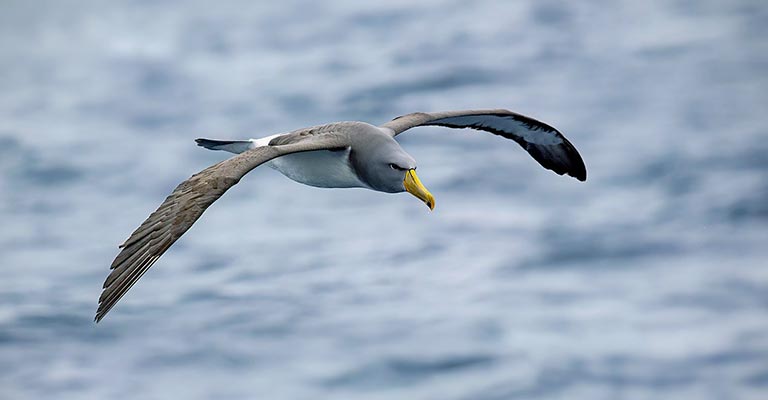
The Chatham Albatross (Thalassarche eremita), endemic to the Chatham Islands, exhibits a range of fascinating behavioral habits that contribute to its survival and reproductive success in the challenging marine environment of the Southern Ocean.
Courtship Displays
Chatham Albatrosses engage in elaborate courtship rituals, including bill-fencing and sky-pointing, to strengthen pair bonds and establish territories within breeding colonies.
These displays are essential for mate selection and breeding success.
Long-Distance Foraging
These albatrosses are adept long-distance foragers, utilizing their impressive wingspan to glide effortlessly over vast expanses of ocean in search of food.
They often travel hundreds of kilometers in a single foraging trip, relying on their keen sense of smell to locate prey.
Parental Care
Chatham Albatrosses exhibit dedicated parental care, with both parents sharing the responsibilities of incubating the egg and feeding the chick.
This cooperative effort ensures the survival and well-being of their offspring during the lengthy nestling period.
Social Interactions
While primarily solitary at sea, Chatham Albatrosses congregate in dense colonies during the breeding season.
Within these colonies, they engage in various social interactions, including vocalizations, grooming, and territorial displays, which help maintain social cohesion and hierarchy.
Navigational Abilities
Chatham Albatrosses possess remarkable navigational abilities, enabling them to navigate vast distances across the open ocean precisely.
They rely on celestial cues, geomagnetic fields, and learned landmarks to navigate between breeding colonies and foraging grounds, ensuring their survival in the dynamic marine environment.
These behavioral habits showcase the adaptability and resilience of the Chatham Albatross in its oceanic habitat, highlighting the intricate dynamics of its ecological niche.
Wrapping Up
The Chatham Albatross, with its unique adaptations and behaviors, exemplifies the marvels of nature’s evolutionary craftsmanship.
Endemic to the Chatham Islands, this majestic seabird navigates the challenges of the Southern Ocean with grace and resilience.
Its courtship displays, long-distance foraging, dedicated parental care, social interactions, and navigational prowess illuminate the intricate tapestry of its life history.
As a sentinel of ocean health, the conservation of the Chatham Albatross is paramount, requiring collaborative efforts to mitigate threats such as habitat degradation, fisheries bycatch, and climate change impacts.
By safeguarding its habitats, reducing anthropogenic pressures, and promoting sustainable practices, we can ensure the continued existence of this iconic species, preserving its place in the rich biodiversity of the Southern Ocean for generations to come. Thank you very much.